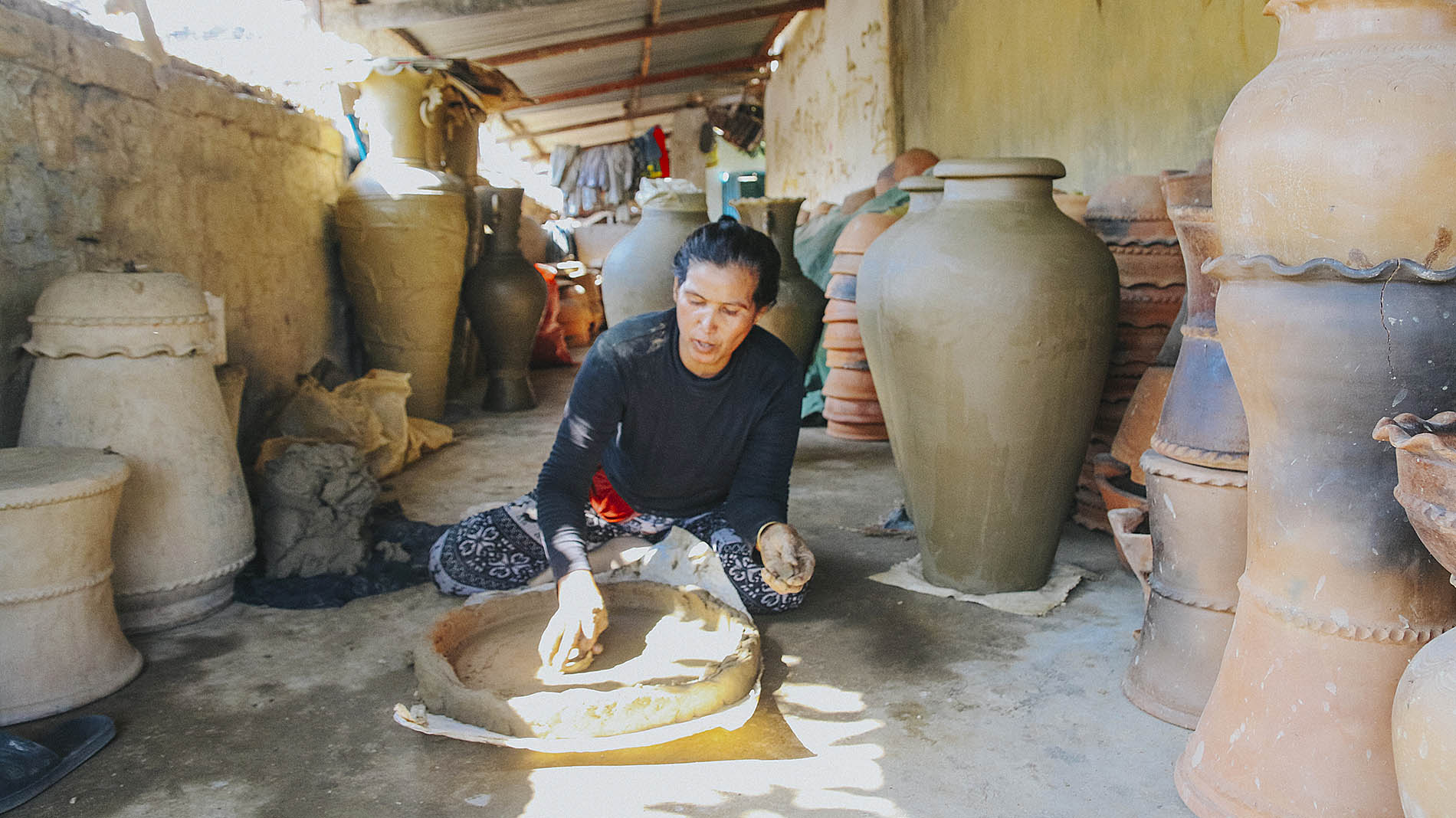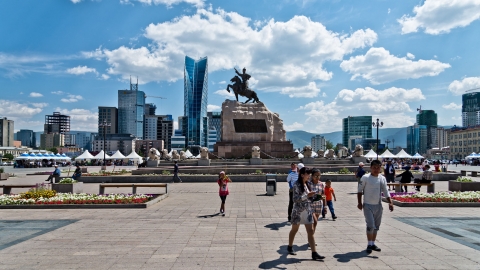Located along National Highway 1A in Phuoc Dan town, Ninh Phuoc district, 10 km from Phan Rang - Thap Cham city, Bau Truc is one of the rare pottery villages in Southeast Asia that still retains the traditional craft methods from the 12th century. Most of the pottery products here are closely associated with the daily life and beliefs of the Cham community. Bau Truc pottery is the quintessence and heritage that Cham women have cherished and preserved for many generations.
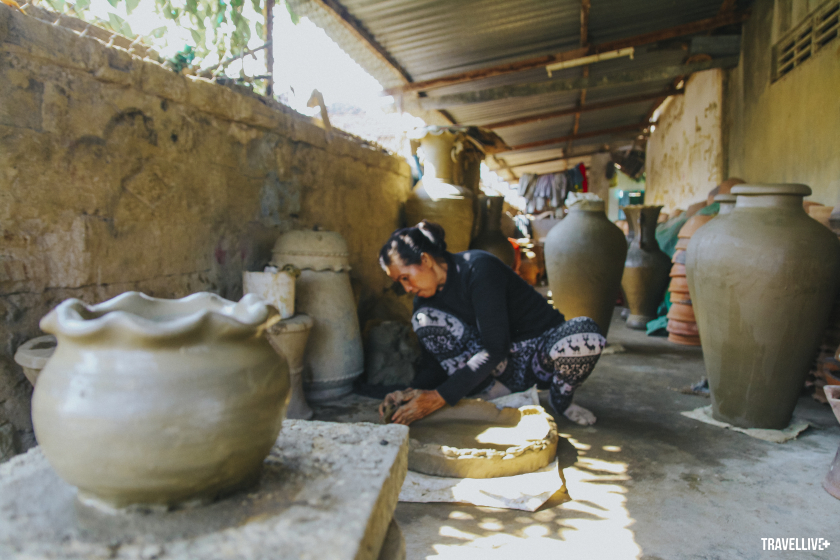
Bau Truc pottery is unique because it is made entirely by hand, without the intervention of machines.
According to Cham legend, Bau Truc pottery was founded by Mr. and Mrs. Poklong Chanh. Thousands of years ago, he and his wife taught the girls in the village to make household items such as pots, teapots, cups, and vases from alluvial soil. Therefore, in Bau Truc, the pottery artisans are mainly women. Every year, people still hold ceremonies to commemorate the founder of Bau Truc pottery on the occasion of Tet Kate.
Pottery is passed down from mother to daughter through many generations. Bau Truc girls know how to make pottery from the age of 12. Men only participate in collecting soil and firing pottery.
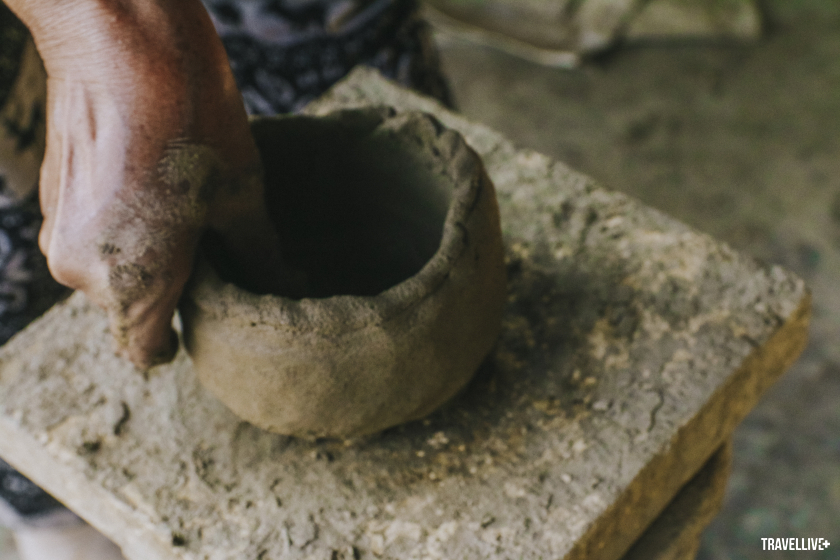
Bau Truc pottery is meticulously made from the stage of selecting clay, shaping to firing.
Unlike other pottery villages, in the thousand-year-old Bau Truc craft village, artisans still diligently create products with their own hands day after day without the support of machines. Each work is the artist's feelings conveyed in each line. Pottery is made entirely by hand, depending on the emotions, creativity, and gait of each artisan, so each product is an independent, separate work, not duplicated in style and pattern. That is the uniqueness of Cham pottery compared to other types of pottery.
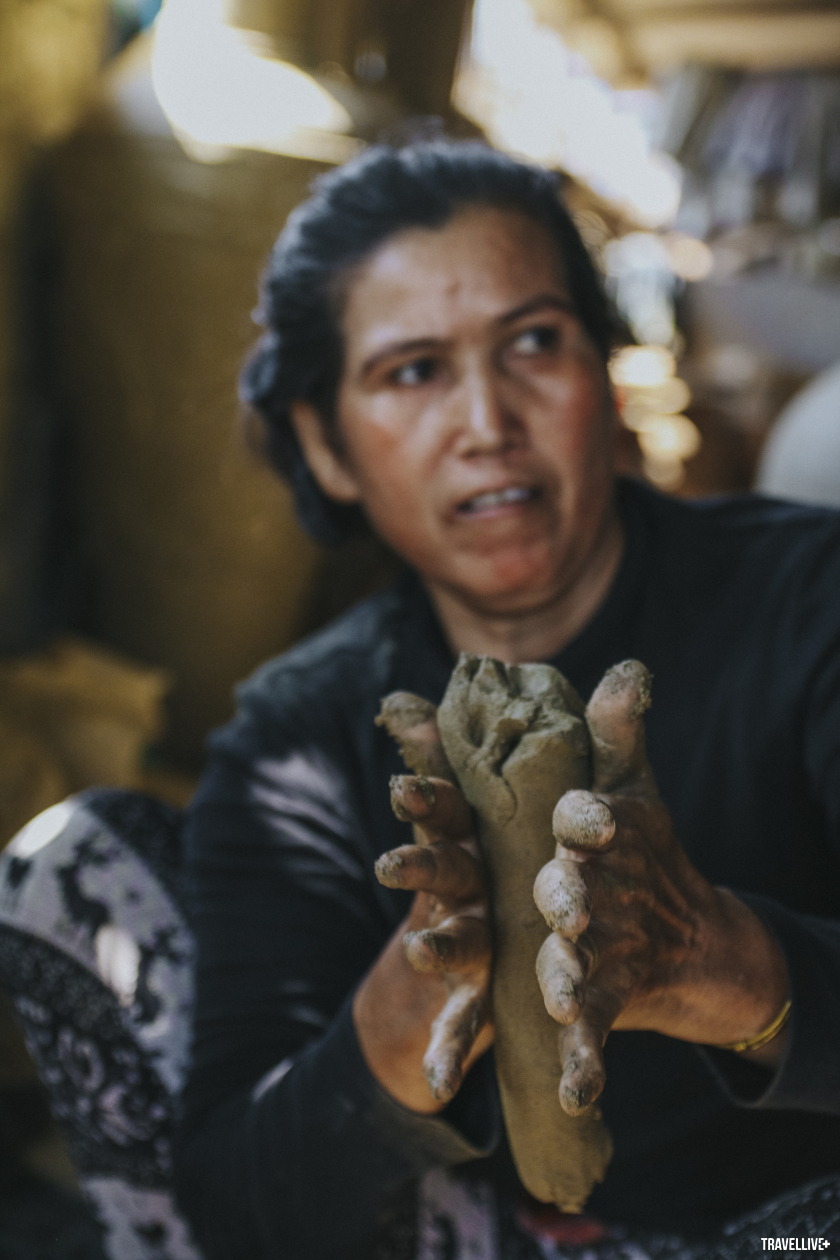
Bau Truc pottery artisans are mainly women.
Bau Truc pottery is carefully created from the step of selecting the soil until the product is formed. The name Bau Truc, in Cham language is Palei Hamu Craok - meaning a low-lying village, protruding at the end of the riverbank, to talk about the source of soil that creates the pottery. The soil for making pottery is alluvial soil taken from the banks of the Quao River, which is highly flexible and smooth. Artisans said that the soil can only be taken once a year in May, when the river water has not risen much. The soil must be black, the sand and water must not be salty for the pottery to be beautiful. Villagers bring the soil home and mix it with water in the right proportion, kneading it with their feet until the soil is flexible. Then, the soil is cleaned, crushed, soaked in water and mixed with white sand. Right from this step, the artisans are very careful because if dust gets in, the baked pottery will easily break.
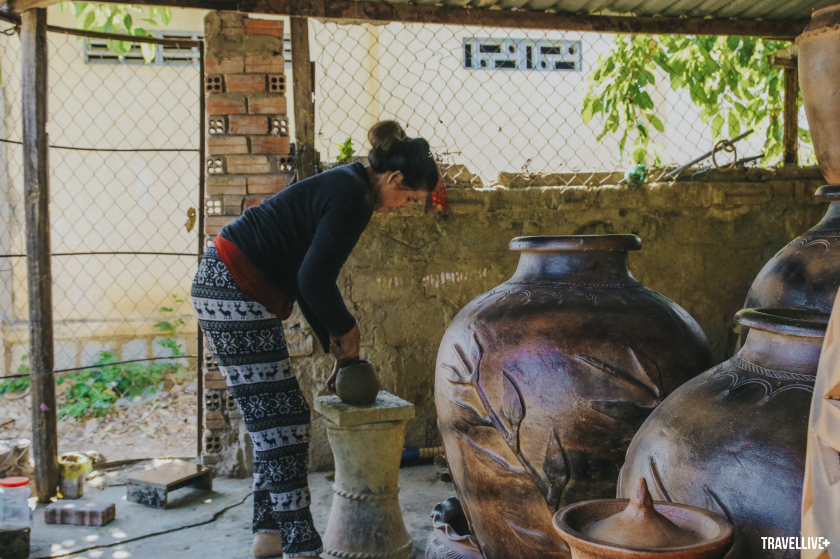
Bau Truc pottery artisans have been "making by hand and turning by butt" for thousands of years.
Raw pottery is produced for about 5-10 days before being fired. The process of making Bau Truc pottery is described by the phrase "made by hand, turned by the buttocks". In Bau Truc, the wheel does not exist. The artisan walks backward around the product, using only his hands to whip and mold to create the shape of jars, cups, etc. Not many colors, not too sophisticated, without complicated drawings, Bau Truc pottery is simple, rustic but sophisticated. The patterns reflect the people's lives such as water waves, plant patterns, shells... The products are also closely associated with the religious life of the Cham people such as reliefs of Cham kings, Apsara dancers...
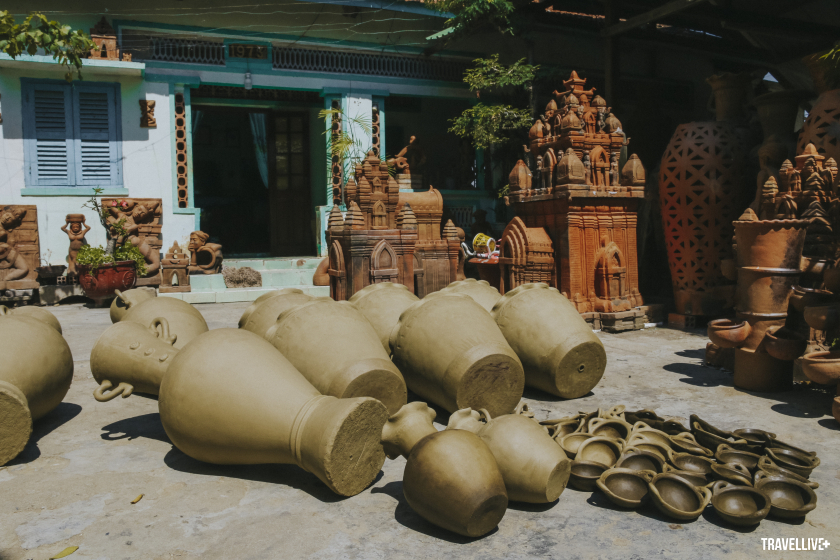
Pottery is dried before being fired.
After shaping, the pottery is dried in the sun and stored in a cool place for a few days before being fired for 4-5 hours. The artisan does not use a kiln but arranges the pottery on firewood and straw to fire the pottery outdoors. Before firing, people perform a ceremony to pray to their ancestors to bless the finished pottery batch to their liking. While firing, limit laughing, talking, and making loud sounds. When firing pottery, choose a sunny, clear day with little wind so that the heat gently heats the product evenly. The fired product will be durable; if not fired enough, the pottery will break easily. Finally, the pottery is brought out to be colored. The pottery has a characteristic red-yellow, pink-red, and gray-black color taken from the dong fruit or the star fruit.
Artisan Dang Thi Phan - over 70 years old - is a woman who has spent 50 years meticulously molding each block of Quao River clay, breathing life into many Bau Truc ceramic vases and jars. She said that when she grew up, she saw her grandmother and mother making pottery, she only kneaded toys. At the age of 18, she started learning to make pottery. Artisan Dang Thi Phan has brought Bau Truc ceramic products throughout Vietnam and abroad. Notably, in 2005, artist Dang Thi Phan was honored to win first prize against international ceramic artisans in a competition in Japan. She said: "I am over 70 years old, I should have retired but I still make pottery. Making pottery requires diligence, perseverance, and meticulousness. Without perseverance, you cannot do it."
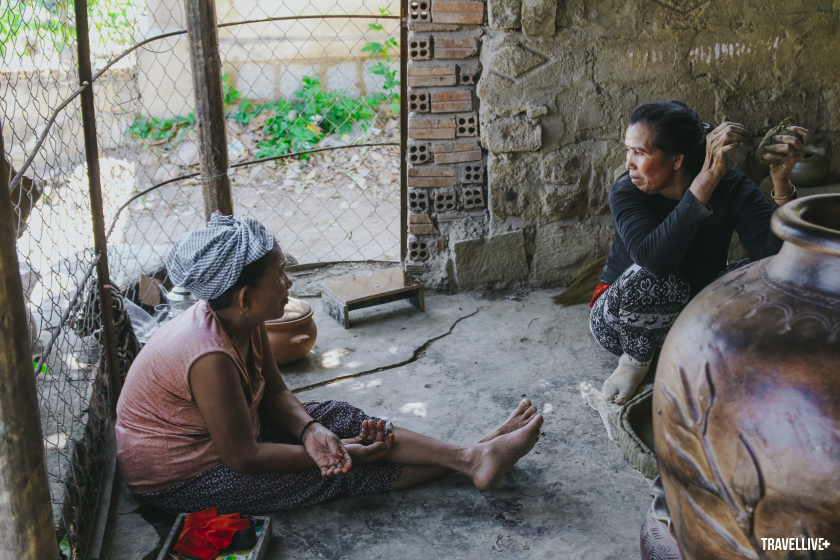
Mrs. Dang Thi Phan (left) is the person who has breathed life into Bau Truc pottery for 50 years.
Through thousands of years of ups and downs in the development process, Bau Truc pottery village is like a living museum of Cham cultural life. Bau Truc pottery artisans still rhythmically circle around the pottery pedestal every day, diligently creating rustic ceramic jars and pots from the soil of their homeland. Pottery is not only a spiritual heritage but also plays an important role in the economic life of villagers on the banks of the Quao River.






